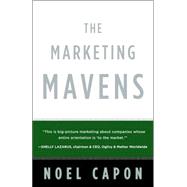
| Introduction : why marketing mavens spell marketing with a capital M | p. 1 |
| The new market model | p. 11 |
| Execution in marketing | p. 23 |
| Imperative 1 : pick markets that matter | |
| Identifying opportunities | p. 59 |
| Matching markets with competencies | p. 87 |
| Imperative 2 : select segments to dominate | |
| Segmenting to find the sweet spots in a market that matters | p. 105 |
| Imperative 3 : design the market offer to create customer value and secure differential advantage | |
| Meeting customer needs and beating competition | p. 137 |
| Imperative 4 : integrate to serve the customer | |
| Structuring systems and processes to serve customers | p. 167 |
| Creating a company-wide marketing culture | p. 201 |
| Imperative 5 : measure what matters | |
| Measuring enterprise and market for a custom fit | p. 227 |
| Conclusion : sustaining marketing excellence | p. 255 |
| Selecting the world's best marketers | p. 273 |
| Executives interviewed for this book | p. 283 |
| Table of Contents provided by Blackwell. All Rights Reserved. |
The New copy of this book will include any supplemental materials advertised. Please check the title of the book to determine if it should include any access cards, study guides, lab manuals, CDs, etc.
The Used, Rental and eBook copies of this book are not guaranteed to include any supplemental materials. Typically, only the book itself is included. This is true even if the title states it includes any access cards, study guides, lab manuals, CDs, etc.
Excerpted from The Marketing Mavens by Noel Capon
All rights reserved by the original copyright owners. Excerpts are provided for display purposes only and may not be reproduced, reprinted or distributed without the written permission of the publisher.